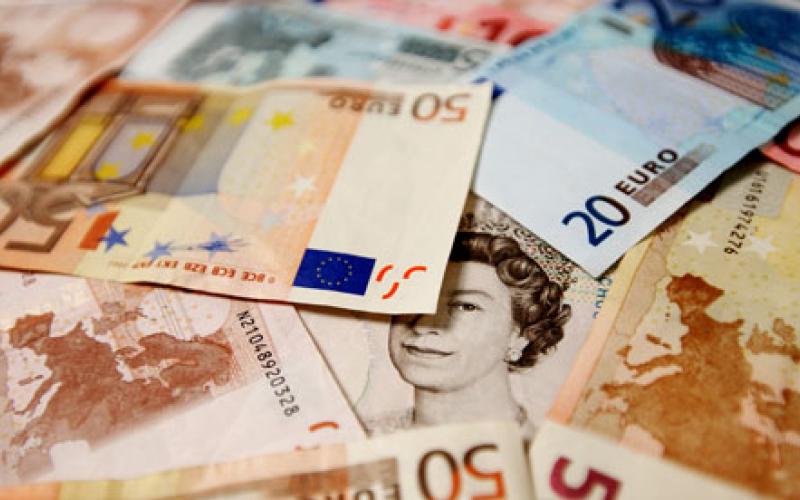“What a Year” – 2016 Currency Report from Premier FX

As we approach the end of a very eventful year, especially in terms of popular politics, it might be a good time to reflect on the influences driving currency values at the moment, especially US$, € and £, and how these might play out in the year to come.
£/$ opened in January 2016 at 1.4775 and £/€ at 1.3605. At this time, few if any, were seriously expecting the UK to vote to leave the EU or that Donald Trump would be elected president of the United States later in the year. There were, however, weaknesses in the UK economy and fissures in the European Union, which have been present all year, and increasing concerns about the EU banking system and economy, especially in the periphery countries.
In early July £/$ had fallen to 1.2930 and £/€ to 1.1625 following the unexpected UK Brexit vote, and subsequently reached lows of £/$ 1.2160 on 14 October £/€ 1.0675 on 1 November.
By any standards this was a significant fall in the value of £ – around 18% versus US$ and 22% against €. Since then £ has made some tentative gains but failed to rally back convincingly above 1.2750 against US$ and 1.20 against € (at the time of writing).
Clearly £ has been badly hit by Brexit concerns and uncertainty since June, even though we are still over two years away from any UK departure from the single market. This uncertainty has been compounded by a change of government, uncertainty about the terms of Brexit, and concerning signals about the robustness of the UK economy. In response to this, the Bank of England has had to maintain an extremely accommodating monetary policy stance, reducing interest rates in August to 0.25% from 0.5%, the first change since March 2009. This has been accompanied by a range of quantitative easing measures, which effectively pump money onto the economy to stave off recession.
The fall in the value of the pound is still only gradually affecting inflation, stemmed in some measure by end of year forward currency hedging by importers and by discounted prices being retained by retailers. Common wisdom is that inflationary pressures will begin to build in 2017 as import costs are passed on to consumers and crude oil prices rise following a recent decision by OPEC to reduce production. Underlying this is a shortage of UK housing that is inflating house prices and a worrying increase in level of both personal and government debt. The plan to balance the UK budget by 2020 having been abandoned in view of expected shocks to the UK economy resulting in lower tax revenues next year. The effect of any future interest rate rise in the UK to stem inflation would be significant in view of the levels of housing, private and pubic sector debt.
All this is in stark contrast with the US where the economy is relatively healthy and growing, currently boosted by (possibly rather optimistic) hopes that Donald Trump’s policies will further stimulate the economy next year. The Federal Reserve Bank is widely expected to raise interest rates when the FOMC next meets later in December. In this scenario, it is hard to see £ making any substantial gains against the US$ in the first half of 2017, and buyers of the currency will be well advised to take advantage of any spikes to buy at good levels. The overall trend may be to probe the lows of this year.
The Euro is rather harder to call. Whist this year £ has understandably met selling every time there has been negative news on how the UK will fare after Brexit, the Euro has been less vulnerable than one might expect. There are serious problems in the European banking sector, growth problems in many of its member countries, and quite significant political risk in countries like Italy, France, Holland (and to a lesser extent Germany) which could spill out during the coming year, especially if we see political parties gaining power that are more Euro sceptic and demand popular referendums on EU membership. It may be that the whole EU system and the future of the Euro itself may be questioned at some point, and this could lead to £ regaining ground against a weakened European currency.
I would therefore suggest extreme caution with regards to £/€ especially in the first six months of 2017. We know £ is vulnerable, but we do not know what negative European developments may do to the value of the Euro. I would suggest that on balance there is a chance that we will see better levels to buy € in early 2017, above 1.20 and maybe higher. As usual, care has to be taken because we could see sudden falls on unexpected news, but these should be opportunities for those selling €.
Even a crystal ball would be cloudy in this uncertain environment and we would therefore suggest keeping in contact with PremierFX on a regular basis for up to date information and views before making currency decisions. It is better to be safe than sorry.
PremierFX offers customer focused and bespoke support to individuals and companies with foreign currency exposures to help them manage currency risk and reduce exchange and currency transfer costs. Please contact us if we can be of any help with this.
Gary Owen – Premier FX
Tel: 01737 735064
You may also like
-

- Sponsorship Industry News
The Rise of Hyperlocal Marketing – Rebuilding Society
Not only has a new agency been formed during the most difficult of times but there was also an acknowledgement of Hyperlocal Marketing.
-

- Sponsorship Industry News
PepsiCo agree five-year sponsorship of UEFA women’s competitions
PepsiCo has signed a new five-year partnership with UEFA to sponsor its women’s football competitions, UEFA Women's Champions League and the UEFA Women's EURO.
-

- Sponsorship Industry News
Paralympics GB partners with Papa John’s ahead of Tokyo 2020
Papa John’s have teamed with Paralympics GB ahead of the rescheduled Tokyo 2020 Paralympic Games as they aim to raise £250,000 between the pizza chain's staff and customers




